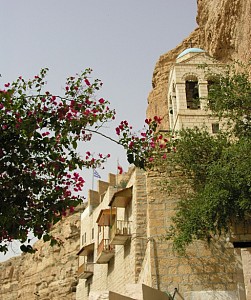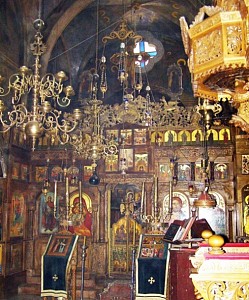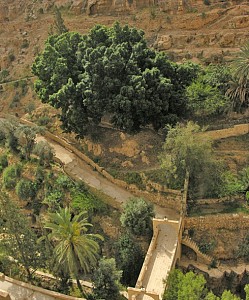Commemorated January 9
O God of our Fathers,
who ever deals with us according to Thy loving-kindness,
do not deprive us of Thy mercy,
but by the intercessions of our Holy Fathers direct our life in peace.
Troparion, Tone 4
We that are assembled today,
praise you in song as never-setting lights of the rational Sun;
for you shone forth unto those in the darkness of ignorance,
and now call all to the heights of piety, O holy Hieromartyrs.
Therefore we cry unto you:
Rejoice, O foundations of those that fast.
Kontakion, Tone 3
St. George Monastery of Chozeba from Judea, also called Wadi Kelt, is an ancient Orthodox monastery bearing the relics of Saint John Jacob of Neamt (the Romanian), called also “the Chozebite” and of Saint George the Chozebite. The monastery is situated approximately twelve miles east of Jerusalem. The valley of “Wadi Kelt” occupies a large part of the Judea desert and runs parallel with the ancient Roman road that once connected Jerusalem to Jericho, a road with biblical connotations – where the parable of the Good Samaritan is situated (Luke 10: 29-37). It is also believed that the prophet Elijah lived in this region during his persecution by King Ahab.
The Monastery was founded in the fifth century by St. John of Thebes. After been tonsured a monk, St. John left Thebes in Egypt and came to the wilderness of Judea, around 480. Here, in a cave, he lived as a hermit. The monastic complex of Chozeba dates back to the late sixth century, and still maintains its chapels and gardens, which are inhabited today by Greek monks. The monastery is carved into a rock wall. The monastery came to be named “St. George of Chozeba” only after this famous monk lived here in the sixth century.
In the spring of 614 the Persians attacked Byzantine held Palestine, sacking Jerusalem and attacking the monastery. Forty holy monk-martyrs were put to death by the Persians and the monastery was abandoned. The holy relics, the bones and skulls of the monks killed by the Persians, are preserved in a chapel near the main church, where the incorrupt relics of St. John Jacob the Romanian are also found, along with the tomb of St. George the Chozebite.
In 1878, a Greek monk named Kalinik, settled in the old monastic walls of the wilderness of Judea, fully restoring the monastery. The repair works were completed in 1901. The oldest part of the monastery preserves a mosaic floor dated back to the late sixth century.
 |
Monastery |
 |
Altar |
 |
Monastery |

